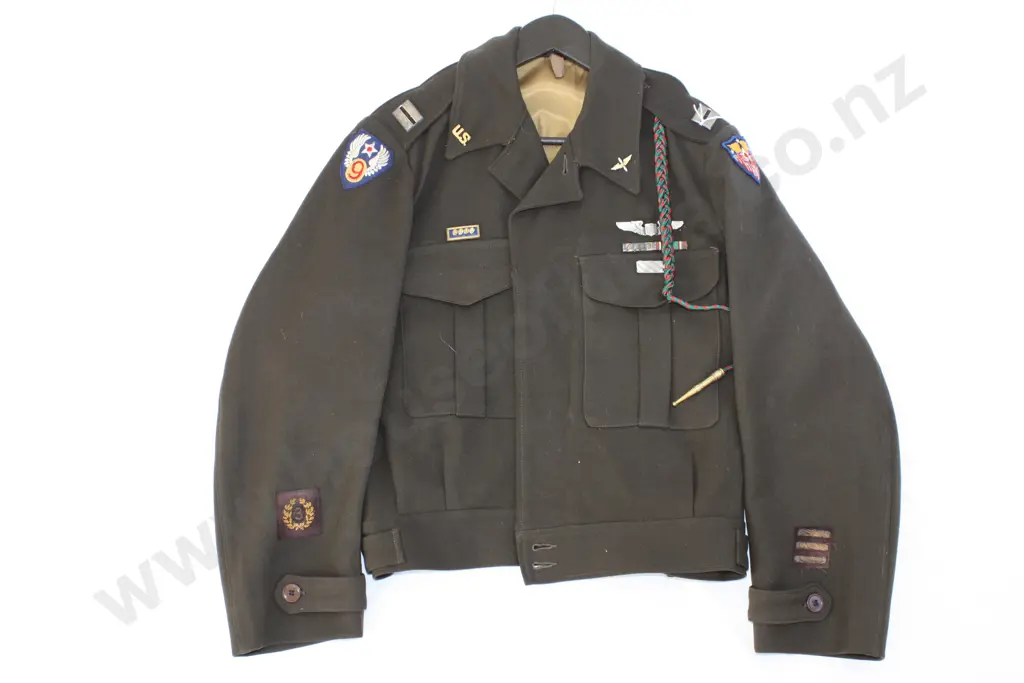Medals & Militaria Saturday, 22 June 2024 - 11:00 AM start
London made Ike jacket to Pilot Lieutenant Garland A. York
Lot Details
Utica NY and a London made Ike jacket with insignia (maker Huntsman, Saville Row), British DFC medal ribbon is attached to the tunic. Often considered one of the unsung heroes of the war the job of the Photo Reconnaissance Squadron was to be the eyes of the army and to gather intelligence in preparation for later operations. 34 Photo Reconnaisance Squadron (34 PRS) was 1 of 6 squadrons forming the Ninth Air Force’s 10th Photo Reconnaissance Group (10 PRG). The groups aircraft of choice was the Lockheed F-5 which was a stripped down version of the famous P-38 and it was equipped with cameras instead of guns. During the Spring of 1944 the Squadron was tasked with an important mission to photograph the beaches of Normandy prior to the invasion. In order to minimise their chances of discovery the missions were flown alone and without escorts. Flying just above the waves to avoid detection the pilots photographed the beaches of Normandy at an altitude of between 15 and 50 feet and with an average speed of 350 knots. These missions were known as ‘dicing’ missions as, like the rolling of dice on a gambling table, you never knew quite how it would turn out. In total 11 of these dicing missions were flown by 10 PRG between 6th May and 20th May 1944 which allowed a scale model of Omaha beach to be produced in preparation for the invasion. Lieutenant York, a member of B-Flight and the youngest pilot in 34 PRS, flew one of these dicing missions on 20th May and when his pictures had been developed it was found that he had photographed the exact section of the Normandy beaches on which the American forces would land, he had photographed all of Omaha and most of Utah beaches. York’s mission was to be that last of the dicing missions and after that all missions were flown at heights of between 15,000 and 30,000 feet. 10 PRG was awarded a Distinguished Unit Citation for its performance in the dicing sorties with York being awarded the US Distinguished Flying Cross for his part in the missions. Garland York was noted as being a ‘hot’ pilot who had bent a couple of aeroplanes in his time with the squadron, in later life though he said he never felt like a hero because , as a Photo Recon pilot, he was never able to confront the Luftwaffe in the arena of aerial combat that made aces out of so many American fighter pilots.


